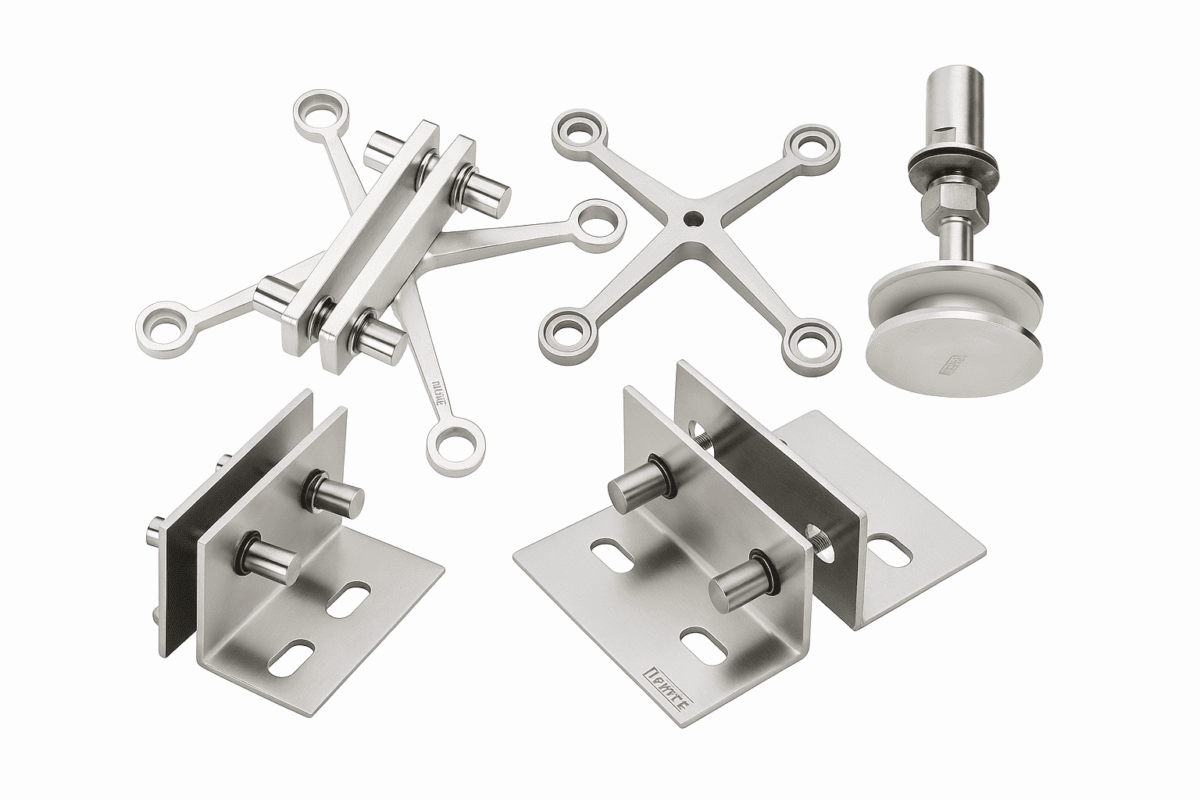In the world of modern architecture, glass facades have become a defining feature of aesthetic appeal and functional design. They provide elegance, natural light, and a seamless connection between indoor and outdoor spaces. However, the strength, stability, and beauty of any glass facade rely heavily on one crucial aspect — Glass Facade Fittings.
From spider fittings to routels, tension rods, spice plates, and fin plates, these components ensure that your glass facade is not just visually stunning but also structurally sound and long-lasting. In this article, we’ll explore the most important fittings used in glass facades and how they enhance building design.
What Are Glass Facade Fittings?
Glass facade fittings are specialized hardware components used to fix and secure glass panels in architectural structures. They are designed to bear loads, resist environmental stress, and maintain a sleek, minimal appearance without compromising safety.
These fittings allow architects and builders to create large, frameless glass surfaces for skyscrapers, shopping malls, airports, showrooms, and modern residential projects.
Benefits of Using High-Quality Glass Facade Fittings:
- Enhanced building aesthetics
- Structural safety and stability
- Flexibility in design
- Easy installation and maintenance
- Resistance to weather and corrosion
1. Spider Fittings – The Backbone of Glass Facades
Spider fittings are perhaps the most recognized element of glass facade systems. These multi-armed connectors hold glass panels in place while maintaining a frameless, modern look.
Key features:
- Made from stainless steel for strength and durability
- Available in 2-way, 3-way, and 4-way arm designs
- Used in both exterior and interior glass installations
Advantages in building design:
- Allow large glass panels with minimal obstruction
- Provide flexibility in glass angles and alignment
- Enhance transparency and natural light flow
Common applications:
- Commercial towers
- Glass atriums
- Showroom exteriors
2. Routels – The Invisible Connectors
Routels are small but vital fittings used to connect glass panels to spider fittings or other supporting structures. They act as the link between the glass and the main structural elements.
Key features:
- Precision-engineered for a perfect fit
- Usually made from stainless steel or aluminum
- Can be fixed type or articulated type for flexibility
Advantages in building design:
- Reduce stress on glass panels
- Provide a clean, seamless look
- Enhance safety by distributing loads evenly
Common applications:
- Curtain wall glazing
- Frameless shopfronts
- Skylights and canopies
3. Tension Rods – Adding Strength and Stability
Tension rods are structural elements used to provide stability to large glass facade installations. They work by absorbing and distributing tensile forces, ensuring that the glass remains securely in place under wind loads and other stresses.
Key features:
- High-strength stainless steel construction
- Adjustable for precise tension control
- Can be combined with spider fittings for maximum support
Advantages in building design:
- Improve load-bearing capacity
- Allow for slim, elegant support systems
- Reduce the need for bulky framing
Common applications:
- High-rise glass walls
- Glass canopies
- Large atrium facades
4. Spice Plates – Perfect Alignment and Load Distribution
Spice plates are connecting plates used in glass facades to join structural members while ensuring perfect alignment and load transfer. They are often used in combination with tension rods and fin plates.
Key features:
- Customizable sizes and hole patterns
- Corrosion-resistant finish
- High load-bearing strength
Advantages in building design:
- Maintain structural accuracy
- Evenly distribute forces between glass and fittings
- Support complex glass facade geometries
Common applications:
- Commercial glass walls
- Steel-glass hybrid structures
- Architectural canopies
5. Fin Plates – Reinforcing Vertical Glass Edges
Fin plates are flat, vertical support members that strengthen glass facades by providing additional rigidity. They are essential when large glass panels need extra stability without compromising the sleek look.
Key features:
- Made from toughened glass or stainless steel
- Transparent fins maintain an unobstructed view
- Provide lateral stability against wind pressure
Advantages in building design:
- Enhance safety without adding bulk
- Ideal for tall glass panels
- Maintain visual openness
Common applications:
- Shopping mall entrances
- Airport terminals
- Large storefront displays
Tips for Choosing the Right Glass Facade Fittings
- Material Quality: Always opt for stainless steel fittings (Grade 316 for coastal areas) for maximum corrosion resistance.
- Load Calculations: Work with engineers to ensure fittings are rated for the glass weight and environmental loads.
- Aesthetic Match: Choose finishes like polished, brushed, or matte to match your building design.
- Ease of Installation: Select fittings that allow quick and secure installation.
- Compliance with Standards: Ensure fittings meet international safety and structural codes.
The Role of Glass Facade Fittings in Modern Architecture
Without the right fittings, a glass facade is just sheets of glass. The fittings are what make the structure safe, stable, and visually impressive. They allow architects to design bold, transparent buildings that still meet strict safety standards.
By carefully selecting components like spider fittings, routels, tension rods, spice plates, and fin plates, designers can push the boundaries of architectural creativity while ensuring long-term durability.
Conclusion
Glass facade fittings are not just accessories; they are the foundation of modern glass architecture. From providing structural stability to enhancing aesthetic appeal, these components are indispensable for any building that wants to stand out.
Whether you are constructing a commercial high-rise, a retail storefront, or a cultural landmark, investing in high-quality spider fittings, routels, tension rods, spice plates, and fin plates will ensure that your glass facade is both beautiful and built to last.
A well-designed glass facade not only transforms the look of your building but also reflects innovation, elegance, and strength. Choose the right fittings — and let your architecture shine.

